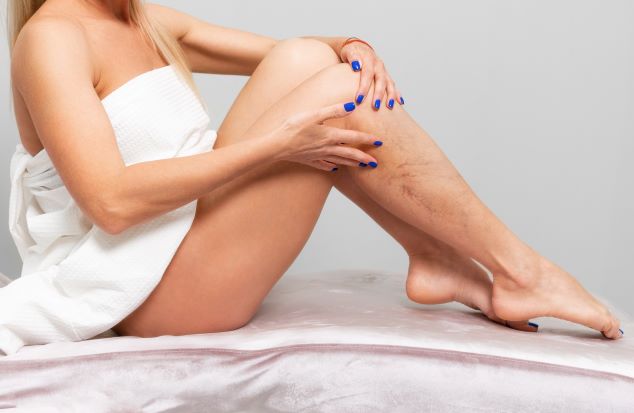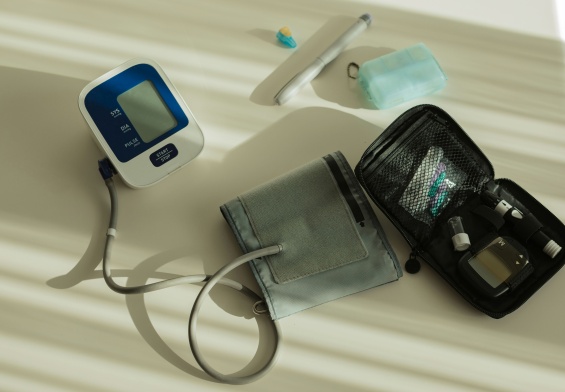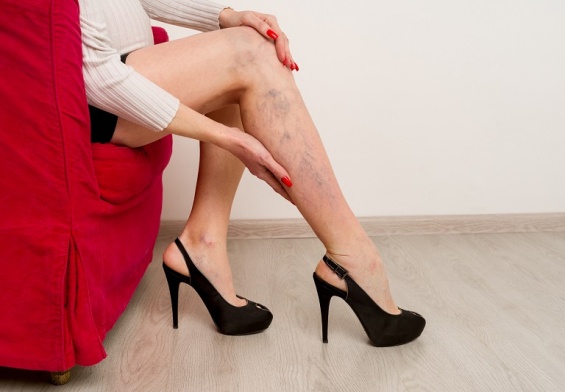What are varicose veins?
Varicose veins appear as twisted, enlarged blue veins that lay right under the skin’s surface. Varicose veins occur when the valves of the veins begin to leak or their walls grow weaker. The job of your veins is to return blood from the rest of the body back to your heart. In order to do this, the veins in your legs have to work against gravity. Muscle contractions in your legs serve as pumps and elastic vein walls assist the blood in returning to the heart. As blood flows back towards the heart, tiny valves in the veins open and then close to stop the blood from flowing backwards. If these veins become damaged or weak, the blood has the ability to flow backward, which causes the blood to pool in the veins which ultimately stretches and twists them.
The National Institute of Health estimates that 60% of adults suffer from some sort of vein disorder. While men account for a quarter of these sufferers, women are the ones who usually seek medical attention for spider veins. Spider veins are more delicate, appearing as red or blue tracings on the skin’s surface. They are referred to as spider veins because they mimic the look of spider webs. Spider veins are a minor form of varicose veins and can often precede the development of the larger and more unsightly varicose veins.
What are some symptoms?
While usually painful, varicose veins do not always cause this. Some symptoms of varicose veins include veins that are dark purple or blue and veins that look twisted and are bulging. Some of the more painful symptoms of varicose veins can include a heavy or achy feeling in your legs, throbbing, burning, muscle cramping and swelling of the lower legs, worsening pain after standing or sitting for an extended period of time, itching surrounding one or more of the veins, and changes to the skin color around a varicose vein.
Who is most at risk for developing varicose veins?
There are multiple factors that can put an individual at a higher risk for developing spider veins. Age can cause wear and tear on your vein’s valves that help to control blood flow. Eventually, the wear that these veins face end up damaging them and allowing some blood to flow back into the veins, where it collects. Sex is also a factor, as women are more likely to develop varicose veins than men. The hormonal changes that come before your menstrual cycle or during menopause can affect your veins, as many female hormones tend to relax the vein walls.
Hormonal birth control can also increase the risk of developing varicose veins. Pregnancy can also lead to varicose veins, as during pregnancy the blood volume in your body increases. This change is necessary to support the growth of your baby, but it can also lead to the enlargement of veins in the legs. Genetics can also play a role in varicose veins. If your family has a history of developing varicose veins, it is likely you will too. Obesity can also cause varicose veins to develop, as the extra weight puts added pressure on your veins. Standing and sitting for extended periods of time can also cause varicose veins, so it’s important to get in regular movement.
New treatments for varicose veins
In the past, varicose vein treatment sounded worse than the actual condition. Doctors used to use a flexible metal rod that inserted into the vein at groin level, was snaked through the vein and taken out on the other side where a metal cap was attached. They then pulled the rod back through the leg and stripped the vein out through the incision in the groin. When the vein is gone, the deeper circulatory systems will take over and the bulging mass will no longer be visible. In present time, veins are rarely ever stripped anymore. At most, a thin catheter, called a lumen, may be inserted into the varicose vein and the entirety of the vein’s inside where it uses radio waves to heat the vein. This heat shrinks the stubborn collagen in the vessel wall and makes it collapse so that it can then be reabsorbed.
New treatments for varicose veins also use a duplex ultrasound. A duplex ultrasound is used to examine the blood flow in major arteries and veins in the arms and legs. This allows doctors to know the condition of the specific vein affected so they can determine which treatment is best. Doctors can also use a Doppler device to listen to the blood flow in your leg, but it is not as accurate as the ultrasound for finding which exact veins are compromised.
Doctors are also using lasers to collapse varicose veins by sending bursts of concentrated light into it. The laser hitting the skin can cause slight discomfort, but the doctor will quickly cool the skin down. An even newer technique, known as foam sclerotherapy, has also become very popular in recent years. An agent, like an emulsifier or detergent, is agitated with air. This forms a foam that has the consistency of watery shaving cream. This foam is injected into the affected vein and gradually causes its walls to swell and stick together. This inevitably causes the vein to be blocked off, allowing the deeper venous systems to take over. This treatment is usually best for spider veins, as large varicose veins need a more aggressive approach.
Another technique that is not new, but still used often, is known as an ambulatory phlebectomy. During this procedure, the affected vein is extracted from your leg using a device that almost looks like a crocheting needle. Once the vein is removed, it’s completely gone as you don’t have to wait for the vein to be reabsorbed.
Are there any effective home remedies?
While the best way to treat varicose veins is to see a specialist, there are ways to help prevent the formation of these veins (although it can’t always be prevented). Some doctors recommend a diet low in carbs and rich in fiber in order to keep your body weight down and your circulatory system working well. Coenzyme Q10 is a supplement that can aid in circulation and tissue oxygenation. Omega-3 oils also help with the elasticity of blood vessel. Two other supplements that people swear by for varicose veins are vitamin K and ginkgo biloba.
The best way to prevent varicose veins is to make sure you don’t stand for extended periods of time. Some other ways you can prevent varicose veins from forming include avoid sitting with your legs crossed, elevate your legs when resting, and if you are sitting for a long time, make sure you get up and walk every hour. Compression tights are also beneficial and are recommended for those who have visible veins and those who have already had the procedure to remove their varicose veins.




